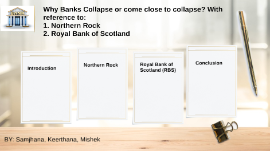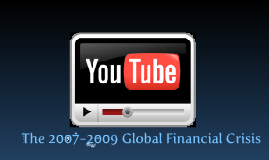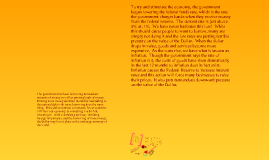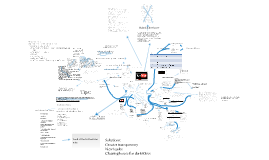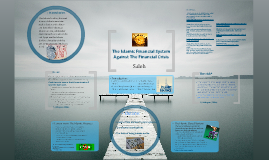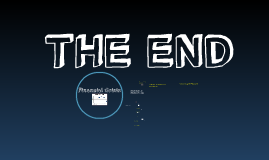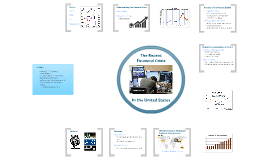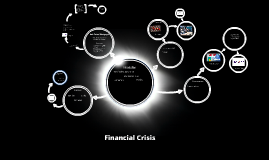financial Crisis
Transcript: The 2007-2009 Global Financial Crisis The financial crisis that began in 2007 on the U.S. mortgage market, led to significant turbulence and uncertainty throughout the global financial system. On February 7, 2007 one of the world’s largest banks, HSBC, announced losses related to U.S. subprime mortgage loans. April 3, New Century Financial, a subprime specialist, filed for Chapter 11 bankruptcy. Chapter 11 is a chapter of the United States Bankruptcy Code, which permits reorganization under the bankruptcy laws of the United States. June, Bear Stearns told an incredulous financial community that two of its hedge funds suffered large losses related to subprime mortgages. Other Wall Street standard-bearers also started reeling from bad investments, including Merrill Lynch, JPMorgan Chase, Citigroup and Goldman Sachs. Before the end of August the crisis had spread to some French and German banks, and prompted the Federal Reserve and the European Central Bank to pump liquidity into the banking system and to reconsider their interest-rate policies. These were only the beginnings of a truly global financial and economic crisis that marked the end of one of the greatest financial expansions in history. The recession officially started in December 2007. By mid 2009, the crisis had brought to their knees major bank and non-bank financial institutions, causing several to collapse, and led to a severe economic contraction, plummeting trade, rising unemployment, and price deflation. The crisis quickly acquired global proportions after hitting Western and Eastern Europe, Japan, Latin America, and the rest of Asia. its origin in the burst of the housing bubble. finance of a bubble is only possible through a corresponding increase in credit – no credit, no bubble. This liquidity financed in the first instance the internet bubble, but because there was no deleverage following the burst of this bubble the liquidity went on to finance other bubbles, including housing, private equity and commodities. Thus, the housing bubble is a transformation of the previous internet bubble. In the U.S., Allan Greenspan injected liquidity and cut interest rates from 6.5% to 1%. This was because of the fear of deflation in the aftermath of the burst of the internet bubble. The low interest rate policy was reinforced by the 9/11 attacks on the World Trade Center. To avoid the negative economic consequences that could arise from anxiety related to terrorist attacks, decisions were made to maintain cheap financing. More important, he was late and slow in draining that liquidity and reversing the rate cuts from the middle of 2004. The Bank of Japan has also contributed to this huge liquidity by printing money aggressively over the period 2001 to 2006 through buying back government bonds from financial institutions. The monetary base increased at nearly 20% per annum in the three years to 2004, in what is called the era of ‘quantitative easing’. But even before that the monetary base was increasing at 7% per annum in 1993-99. This huge liquidity bolstered the yen ‘carry-trade’, which acquired its own momentum by leading into yen depreciation that further bolstered yen carry-trade. financial liberalization had been going on since the 1970s along with financial innovations that emanated from that era, played an equally, if not more, important role than easy monetary policy in creating the huge liquidity of the 2000s. The financial liberalization era allowed financial institutions to initiate a new financial activity, which was based on the discretion of the banks to dispose of their loan portfolio in accordance with risk management. That financial innovation relied heavily on interlinked securities and derivatives, all related to asset backed-securities and subprime mortgages in particular. which refers to the deregulation of domestic financial markets and the iberalization of the capital account Subprime mortgages are inancial innovation designed to enable home ownership to risky borrowers. the origins of the current financial crisis can be explained by three interrelated features that have been going on since the 1970s. Collateralized debt obligations (CDOs) are a type of structured asset-backed security (ABS) with multiple "tranches" that are issued by special purpose entities and collateralized by debt obligations including bonds and loans. Each tranche offers a varying degree of risk and return so as to meet investor demand. CDOs' value and payments are derived from a portfolio of fixed-income underlying assets. CDO securities are split into different risk classes, or tranches, whereby "senior" tranches are considered the safest securities. Interest and principal payments are made in order of seniority, so that junior tranches offer higher coupon payments (and interest rates) or lower prices to compensate for additional default risk. CDS obliges the seller of the CDS to compensate the buyer in the event of loan default. Generally, this involves






